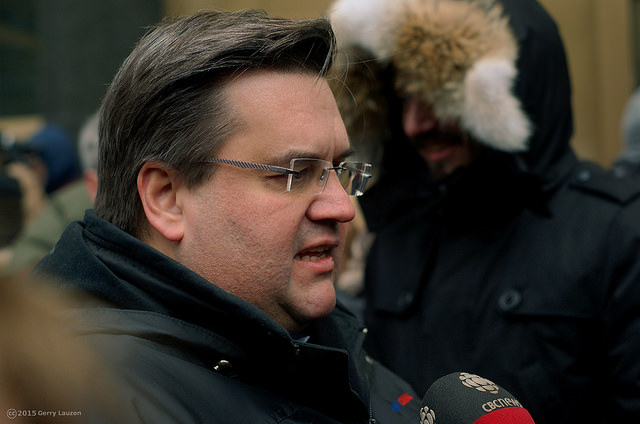Like this article? rabble is reader-supported journalism. Chip in to keep stories like these coming.
It’s good to see Montreal-area mayors oppose the Energy East oil pipeline, because environmental risks such as spills that threaten drinking water are too great and the economic benefits to the city too few.
In 2010, residents along a tributary of the Kalamazoo River in Michigan learned the hard way just how awful a spill of bitumen from Alberta’s oilsands can be. The putrid stench was so strong and the presence of benzene in the air so persistent officials urged residents near the river to abandon their homes. Benzene can damage immune systems and cause anemia and leukemia.
Furthermore, conventional oil floats and can be cleaned up relatively quickly. But the bitumen sank to the bottom of the Kalamazoo River, which was closed to public for two years.
TransCanada’s Energy East oil pipeline will carry lots of Alberta bitumen. That’s its purpose.
Environmental concerns about Energy East go much deeper than the threat of bitumen spills. Its proposed capacity of 1.1 million barrels a day, making it the most capacious oil pipeline in North America, is so great it could single-handedly allow oilsands expansion of more than 40 per cent.
If the Montreal mayors want allies within and outside Quebec to join them in stopping Energy East, they should look to the powerful Indigenous and settler environmental movements in Canada and the United States that are stopping all the other oil sands-exporting lines.
U.S. President Barack Obama killed the Keystone XL oil pipeline after 1,000 protesters were arrested outside the White House; Prime Minister Justin Trudeau effectively killed the Northern Gateway line by banning oil tankers from the treacherous waters off B.C.’s northern coast after many in the public declared it will not proceed; and B.C. Premier Christy Clark’s government opposed the expansion of Kinder Morgan’s existing oil pipeline to the Vancouver area after resistance grew so strong.
The politicians moved only after opposition grew large and insistent.
Why are pipelines being approved and built in the U.S., but not in Canada? Because the pipelines here will enable Alberta’s oilsands to expand. That will prevent Canada from meeting its laudable and ambitious commitments at the Paris climate talks to help keep the world below a 2 C rise.
Alberta’s oilsands are the fastest-growing source of Canada’s greenhouse gas pollution. Canada cannot cut its GHG emissions by at least 80 per cent by 2050 — its G8 commitment — if oil sands emissions grow by 43 per cent. That’s how much Alberta’s latest climate action plan permits.
Oilsands output will grow that much only if it has an outlet to a coast. Energy East is the last bitumen-exporting pipeline still standing. It needs to be bowled over. Alberta’s oilsands can’t be greened — they must be phased out. So must oil and natural gas exports.
It’s the production of oil and natural gas, not in their use in transportation in Canada (cars and trucks), that is this country’s biggest source of greenhouse gases.
Canada has just enough conventional, non-fracked, non-oilsands oil to supply all Canadians and give them energy security, but not to continue oil exports.
Our country’s emissions will plummet when Canada phases them out.
Why run a pipeline 4,600 kilometres to New Brunswick when Newfoundland has enough conventional oil to supply all East Coasters? Most live on or near a coast. Why pipe it when it can be shipped?
That would avoid incursions on First Nations lands. Oil tankers could be phased out as East Coasters’ oil use falls, whereas a pipeline would need three decades of shipping at full volume to amortize its building costs.
The Montreal-area mayors have spoken at the right moment — just before Trudeau and the premiers are scheduled to meet to fashion a plan to transition Canada to a low-carbon future. They should nix Energy East.
Gordon Laxer is author of After the Sands: Energy and Ecological Security for Canadians and is the founding director of Parkland Institute at the University of Alberta.
This article originally appeared in The Winnipeg Free Press.
Like this article? rabble is reader-supported journalism. Chip in to keep stories like these coming.
Image: Flickr/Gerry Lauzon



